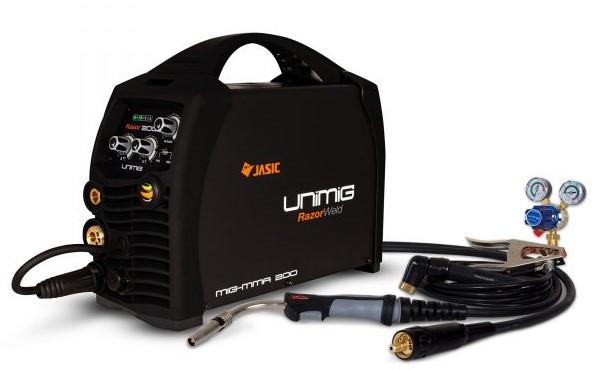Contact us for the latest range of professional Mig welders and consumables, or drop into our showroom at 500 Boundary St Toowoomba.
Single Phase Migs
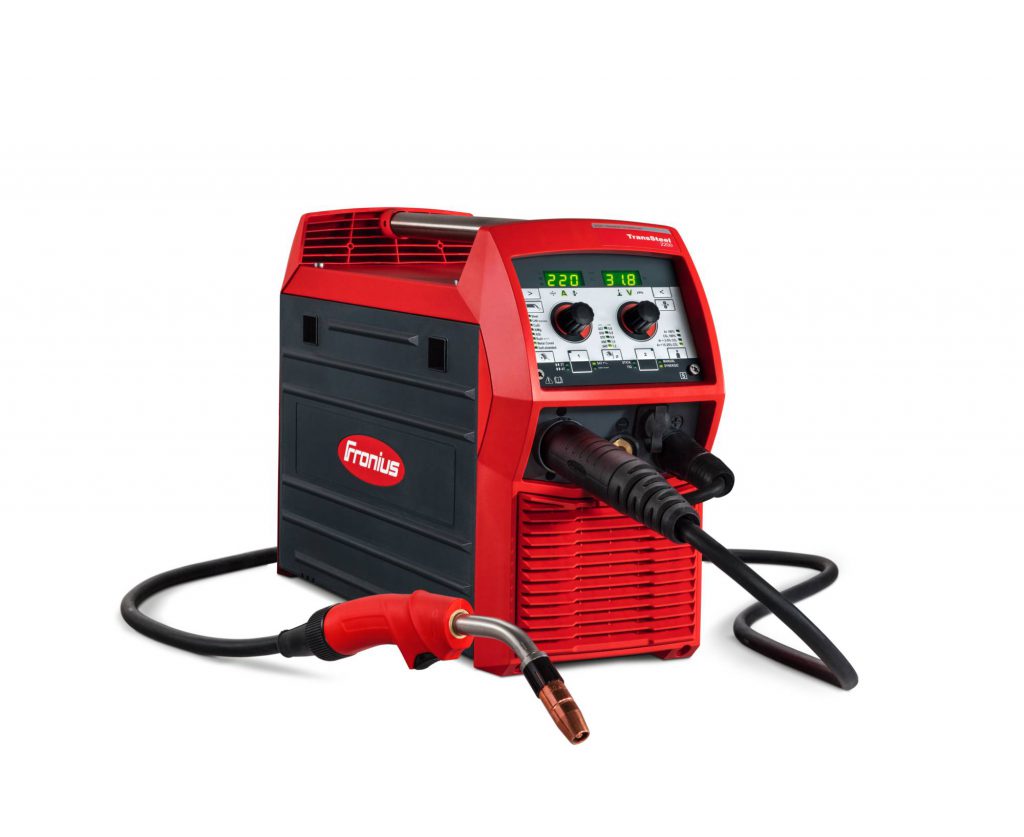
Fronius TransSteel 2200
The Fronius TransSteel 2200 is a compact, 3-in-1 solution. It is the first single-phase inverter power source from Fronius that is also multiprocess-capable, bringing together MMA, MIG/MAG and TIG in a single device. The Fronius TransSteel 2200 is characterised by the intelligent design of the device, ease of use, robustness and a high level of reliability. Weighing only 15.5 kg, it is also one of the lightest devices on the market.
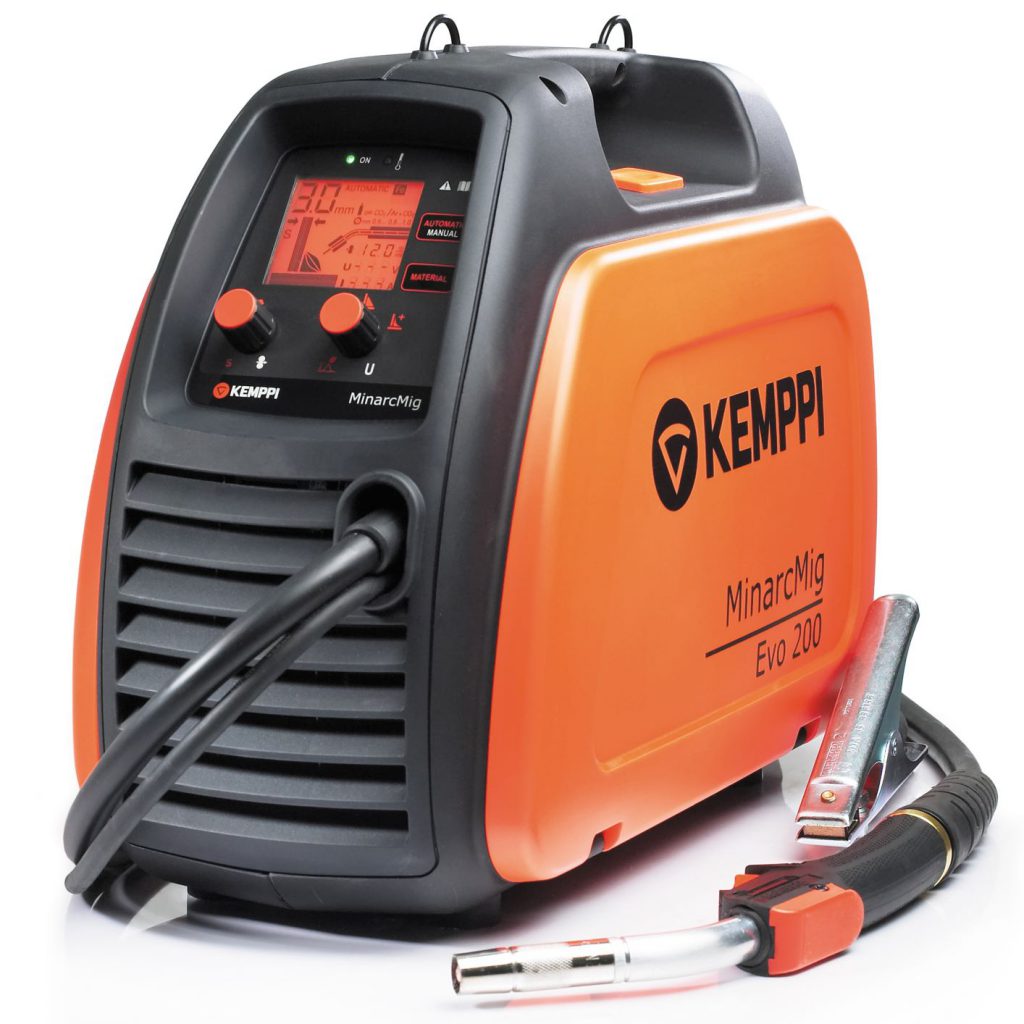
Kemppi EVO 170 & 200
MinarcMig Evo machines pack huge MIG/MAG welding capacity and quality into their portable, compact size. Choose from either 200 A or 170 A models, delivering their welding power at 35 % duty cycle from a 16 A, 1-phase mains supply. MinarcMig Evo delivers premium results wherever your work takes you.
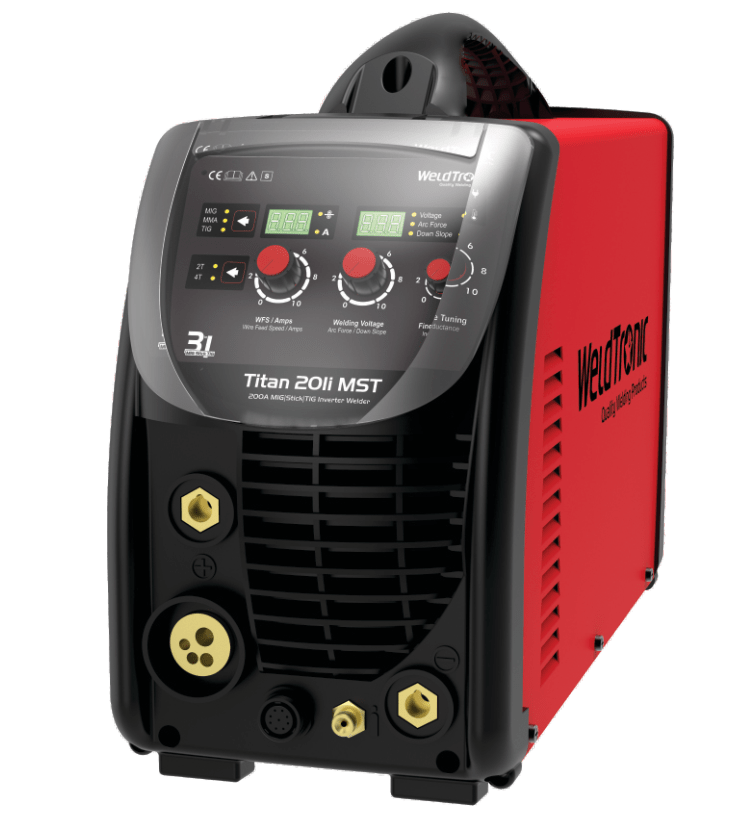
Weldtronic Titan 201i MST
200a MIG Welding Inverter
- IGBT Inverter Technology
- Basic Controls / Easy to use
- Digital Amp & Volt Meters
- Infinite Amperage Controls
- 2T / 4T Trigger Selection
- 1kg(D100) or 5kg(D200) spools
- 2R GEARED Metal Drive System
- Spool Gun Compatible
- Fine Tuning (Inductance)
- Quick Euro MIG Gun Connection
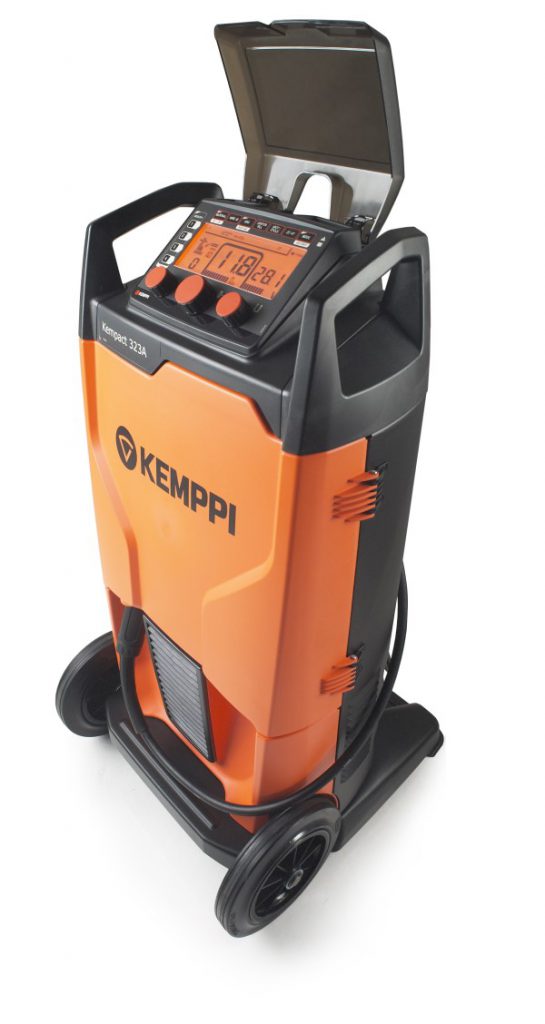
Kempact RA
Modern Kemppi mig/mag welder for energy efficient and cost-effective welding
Kempact RA is feature packed for efficient, easy and reliable welding
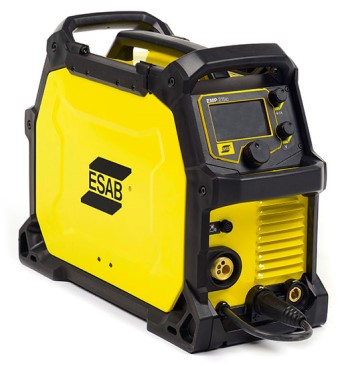
ESAB Rebel Mig
The Rebel™ Series Welding Machines offer 120/230V flexibility and some of the most innovative welding technology available. A breakthrough design inspired by professional welders, the Rebel is a complete package to weld anything – mild steel, aluminium, stainless steel – and go anywhere.
Unimig Razor 200
The RAZORWELD MIG 200 is a new inverter-based portable MIG welding machine with added MMA function. The MIG function allows you to weld with both gas shielded and gasless wire applications.
Easy stepless adjustment of voltage and wire feed make for easy setting of welding parameters giving excellent, professional welding results.
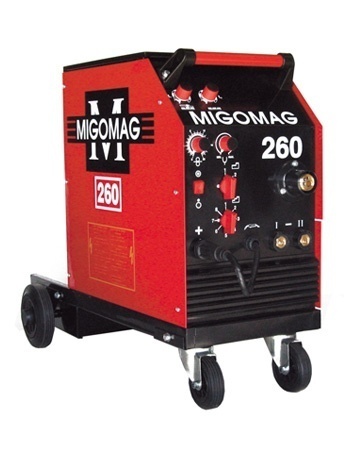
Migomag 260 series
The Migomag 260 series are powerful 240V welding machines built for a wide range of applications. Capable of welding upto a 12ml plate.
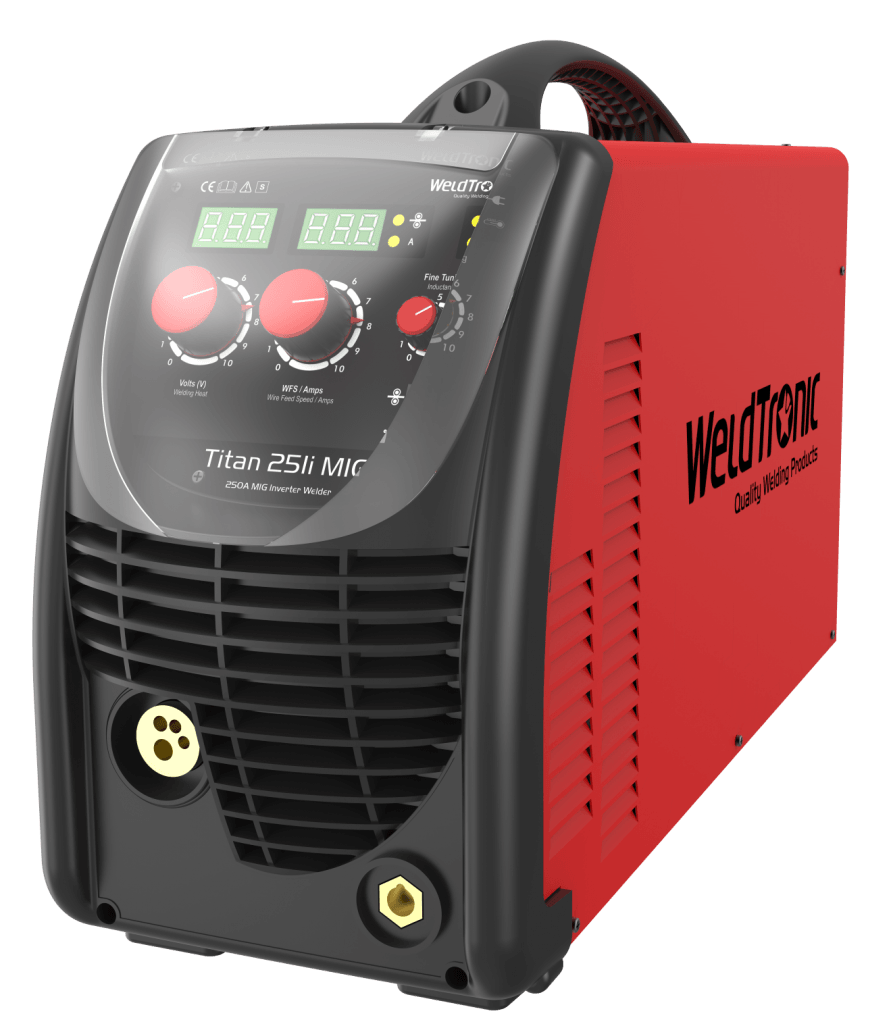
Weldtronic Titan 251i MIG
250a MIG Welding Inverter
- IGBT Inverter Technology
- Basic Controls / Easy to Use
- Digital Amp & Volt Meters
- Adjustable Burn Back Control
- 2T / 4T Trigger Selection
- 5kg (D200) or 15kg (D300) Spools
- 2R GEARED Metal Drive System
- Wire Inch Control
- Fine Tuning (Inductance)
- Gas Check Control
- Quick Euro MIG Gun Connection
- Infinite Amperage Controls
Three Phase Migs
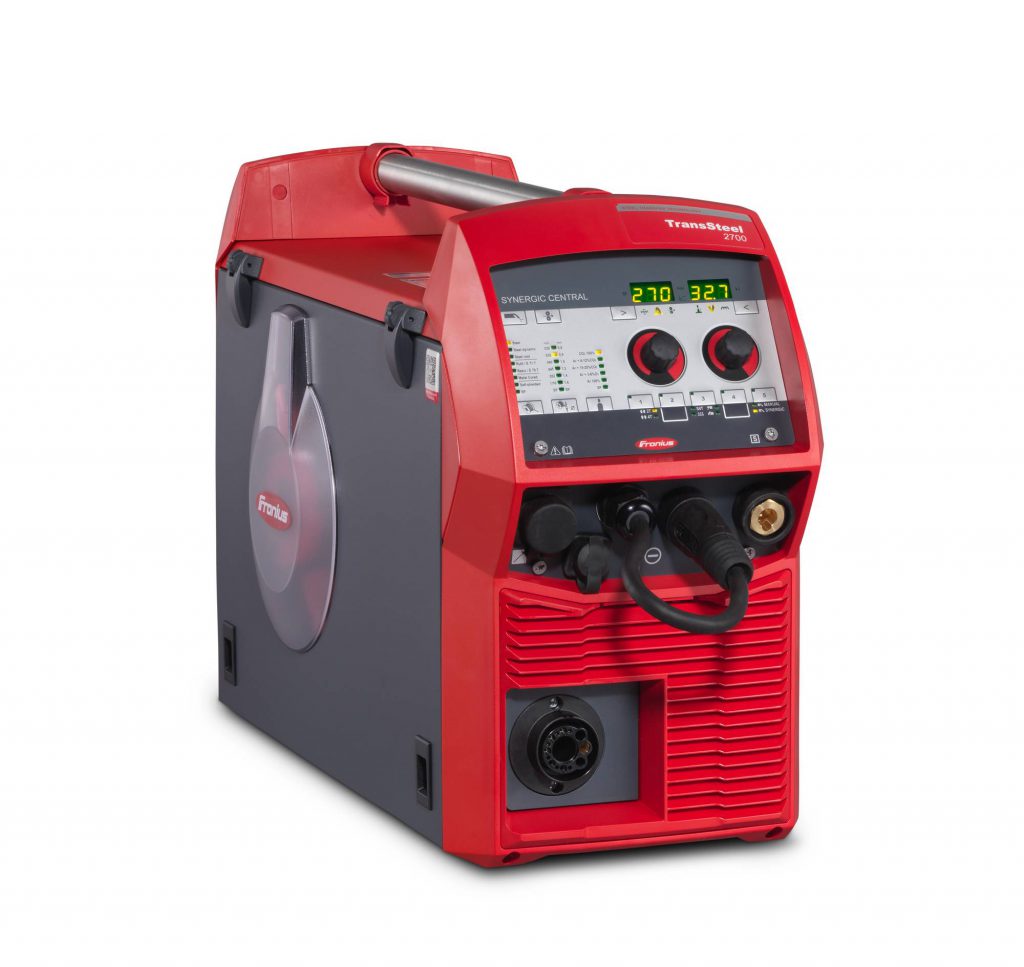
Fronius TransSteel 2700 Compact
For guaranteed stable welding results, even at the power limit.
The TransSteel 2700 is ready for use in just three steps: select the wire, wire diameter and gas and start welding. You can switch between the individual welding processes in 60 seconds.
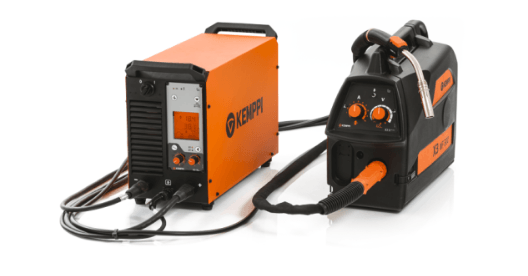
Kemppi X3 Mig
Suitable for gas-cooled MIG/MAG welding and carbon arc gouging, the X3 MIG Welder is a smart investment for professional welders. It is packed with energy-efficient inverter technology and delivers up to 500 A at a 60% duty cycle. The system includes several special functions for fine-tuning the start and end of your welds. The X3 MIG welder’s stable arc guarantees high-quality welds, even with inexpensive CO2 shielding gas.
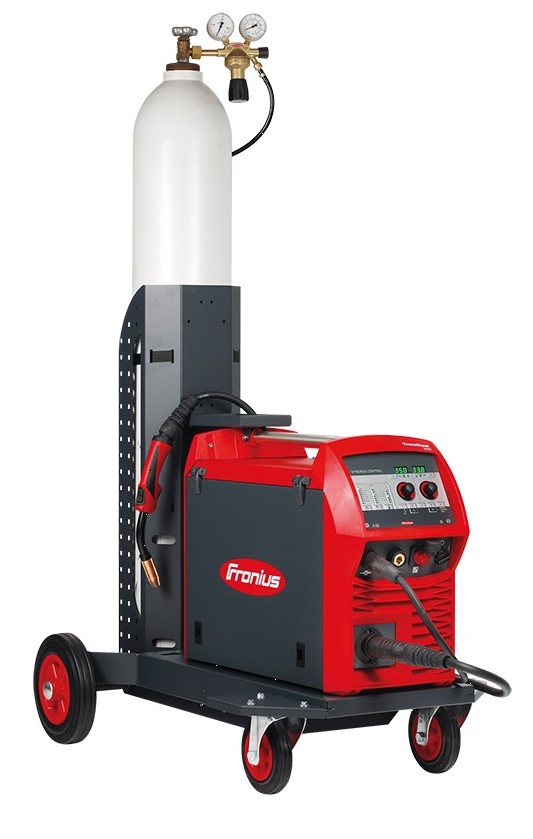
TransSteel 3500 Compact
Making life easier for structural steel fabricatorsTransSteel Compact welding systems guarantee stable welding at the power limit.
Automatic reduction of the wire feed speed prevents the arc from being extinguished.
Irrespective of the welding process, the welder has a total of 350A with 40% duty cycle at their disposal.
Optional water cooling is also available for this power range.
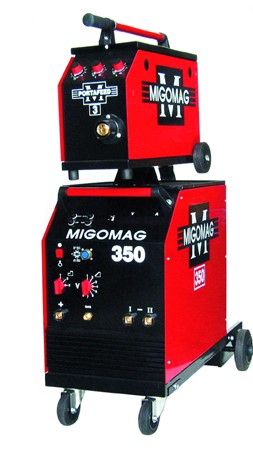
Migomag 350 series
The Migomag 350 series are high performance MIG welders providing excellent arc characteristics for welding steel, stainless & aluminum. Suitable for production welding from light gauge sheet metal up to 16mm plate.
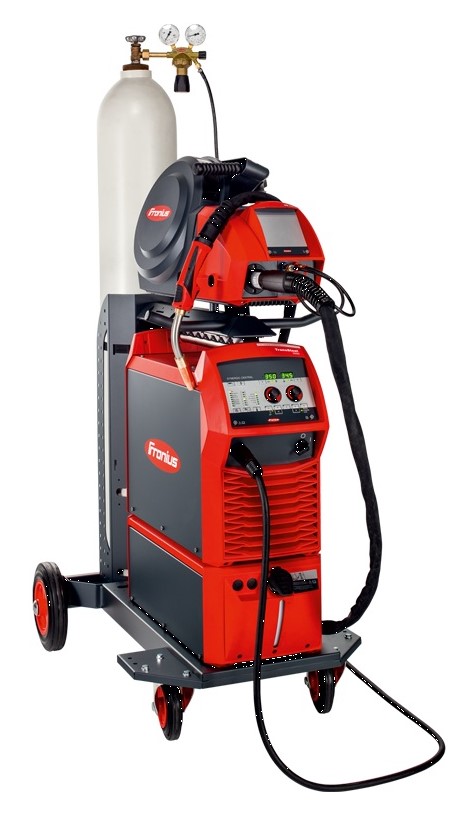
TransSteel 3500 Synergic
The TransSteel 3500 stands for reliability, the greatest possible ease of use and perfect steel welding. The lightweight, robust module with hosepack, welding torch and display ensures that the filler wire advances reliably. The Comfort Wire function automatically takes care of wire threading. The user can easily remove the portable wirefeeder and carry it to welding locations that are difficult to access. Irrespective of the position of the hosepack, the welding parameters remain stable. With an output of up to 350 A, the TransSteel 3500 welding system is available in both gas-cooled and water-cooled versions.
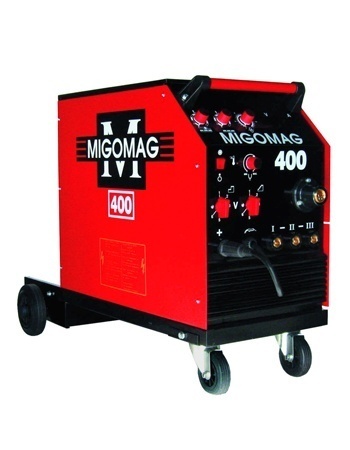
Migomag 400 series
The Migomag 400 is designed to give optimum performance to the industrial fabricator. The large operational range and three inductance levels allows welding of thin material and sections of 20mm thickness. Suitable for steel, stainless and aluminum. The Migomag 400 has an optional portable separate wire feed unit including wire feed control and mode selection options. The Migomag 400 comes with a positive 40mm two wheel driven wire feed system with step less electronic speed control.
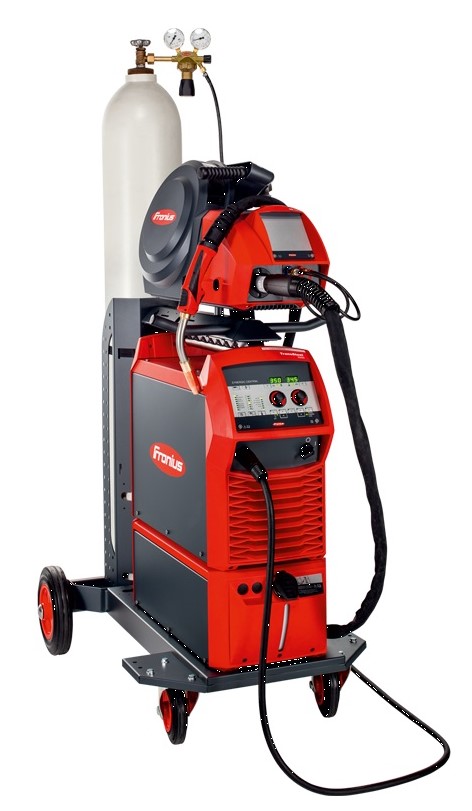
TransSteel 5000 Synergic
The TransSteel 5000 stands for reliability, the greatest possible ease of use and perfect steel welding. The lightweight, robust module with hosepack, welding torch and display ensures that the welding wire advances reliably. The Comfort Wire function automatically takes care of wire threading. The user can easily remove the portable wirefeeder and carry it to welding locations that are difficult to access. Irrespective of the position of the hosepack, the welding parameters remain stable. With an output of up to 500 A, the TransSteel 5000 welding system is available in both gas-cooled and water-cooled versions.
Mig or GMAW(Gas Metal Arc Welding)
Gas metal arc welding (GMAW), sometimes referred to by its subtypes metal inert gas (MIG) welding or metal active gas (MAG) welding, is a welding process in which an electric arc forms between a consumable wire electrode and the workpiece metal(s), which heats the workpiece metal(s), causing them to melt and join.
The history of GMAW or Mig tracks developments in power supply and the understanding of how that relates to the speed of a continuous fed electrode wire. Advances in understanding how gases can be combined also contributed to the creation of an optimal shield for the process. The choice of gas will effect the finished weld profile.
Metal transfer is through:
Short-circuit (GMAW-S): a solid metal-cored wire electrode is depostied during repeated electrical short circuits.
Globular Transfer: A continuously fed solid or metal-cored wire electrode is deposited in a combination of short-circuits and gravity-assisted large drops.
Axial Spray Transfer: high energy mode where a continuously fed solid or metal-cored wire electrode is deposited at a higher energy level, resulting in a stream of small molten droplets. The droplets are propelled axially across the arc.
Pulsed Spray Transfer (GMAW-P): Related to axial spray transfer, where the welding current is cycled between a high peak current level to a low background current level.
Today, GMAW is used for a side variety of material thicknesses and material type. Electrodes are selected based on the thickness of the materials to be welded and the recommended current range.
Mig Welding History Timeline
19th Century
The principles of Mig Welding History began to be developed around the turn of the 19th century, with Humphry Davy’s discovery of the electric arc in 1800.
At first, carbon electrodes were used, but by the late 1800s, metal electrodes had been invented by N.G. Slavianoff and C. L. Coffin.
Early 20th Century
1920:
In 1920, an early predecessor of GMAW was invented by P. O. Nobel of General Electric.
It used a bare electrode wire and direct current, and used arc voltage to regulate the feed rate.
It did not use a shielding gas to protect the weld, as developments in
welding atmospheres did not take place until later that decade.
1926:
In 1926 another forerunner of GMAW was released, but it was not suitable for practical use.
20th Century
1948:
The official start of Mig welding history is 1948. It was not until 1948 that GMAW was finally developed by the Batelle Memorial Institute. The work was sponsored by the Air Reduction Company with the work conducted by Devers and Hobart.
It used a smaller diameter electrode and a constant voltage power source, which had been developed by H. E. Kennedy.
The process relied on an aluminum continuous fed electrode.
Shielding was with argon gas.
It offered a high deposition rate but the high cost of inert gases limited its use to non-ferrous materials and cost savings were not obtained.
It also used an axial spray transfer process. Spray transfer refers to a process where tiny molten metal droplets are sprayed across the arc in the same way water is sprayed through a small hole in a garden hose nozzle. When the current is higher than the transition current, the electrode sprays onto the work in small droplets. These droplets detach and form at the rate of several hundreds per second.
Globular to Axial Spray Transition Current Weld Interface
1953:
In 1953, the use of carbon dioxide as a welding atmosphere was developed, and it quickly gained popularity in GMAW, since it made welding steel more economical.
Based on work performed by Novoshilov and Lyubavshkii,
Used a large diameter steel electrode,
Caused high spatter,
Relied on higher heat generated by the arc, a part of the process that discouraged it’s use by welders.
1958 – 1959:
In 1958 and 1959, the short-arc variation of GMAW was released, which increased welding versatility and made the welding of thin materials
possible while relying on smaller electrode wires and more advanced power supplies.
Small diameter electrodes were in the .035″ – .062″ (.9 – 1.6 mm) range
Enabled short-circuiting transfer where the electrode touches the work and short circuits. This causes the transfer of metal at the rate of 20x to
200x per second.
Required lower levels of heat for welding thing sections of material.
Supports all-position welding.
Excessive current results in excessive spatter.
It quickly became the most popular GMAW variation.
If you’re new to MIG welding and you’d like a simple training so you can learn quickly, without the headaches, download my FREE beginner’s guide to MIG welding.
1960’s:
The spray-arc transfer variation was developed in the early 1960s, when experimenters added small amounts of oxygen to inert gases. Many developments in the 1960’s were the result of improvements and research in power sources.
More recently, pulsed current has been applied, giving rise to a new method called the pulsed spray-arc variation (GMAW-P). This process was based on research from the 1950’s which used high-speed transition between a high-energy peak current to a low background current.
Pulsed arc process uses axial spray transfer to reduce spatter and incomplete fusion defects.
Uses lower heat input.
Improved weld quality in comparison to short-circuit transfer.
1970’s:
Additional developments in power source technology enabled improvements in GMAW-P and the GMAW process.
Introduction of thyristor power sources. These devices can control a large amount of voltage and power with a small device (commonly used in light dimmers).
Work completed by the Welding Institute of the United Kingdom determines the linear relationship between wire feed speed and pulsed frequency. Led to the development of synergic (one knob control) transistor controlled power sources which gave more control to the welder in the shop. The knob controls the wire feed speed and the amount of pulsed energy applied to the arc. The process improved the ease of use related to GMAW-P.
1990’s
Major developments by Lincoln Electric including computerized controlled circuits and software to control the optimal arc welding programs.
Lincoln Electric introduces STT (Surface Tension Transfer) which uses a power source that reacts to the requirements of the arc. Power is generated by a waveform generator, a technology which doesn’t require constant current or a constant voltage power source. In the Lincoln technology the power operates independently of the wire speed.
GMAW Mode of Metal Transfer Selector
GMAW Welding Today
Today, GMAW is one of the most popular welding methods, especially in industrial environments. You can call it the glory days of Mig welding history.
It is used extensively by the sheet metal industry and, by extension, the automobile industry.
There, the method is often used to do arc spot welding, thereby replacing riveting or resistance spot welding.
It is also popular in robot welding, in which robots handle the workpieces
and the welding gun to quicken the manufacturing process.
Generally, it is unsuitable for welding outdoors, because the movement of the surrounding atmosphere can cause the dissipation of the shielding gas
and thus make welding more difficult, while also decreasing the quality of the weld.
The problem can be alleviated to some extent by increasing the shielding gas output, but this can be expensive.
In general, processes such as shielded metal arc welding and flux cored arc welding are preferred for welding outdoors, making the use of GMAW
in the construction industry rather limited.
Furthermore, the use of a shielding gas makes GMAW an unpopular underwater welding process, and for the same reason it is rarely used in space
applications.
The future of Mig welding history has never been brighter.

